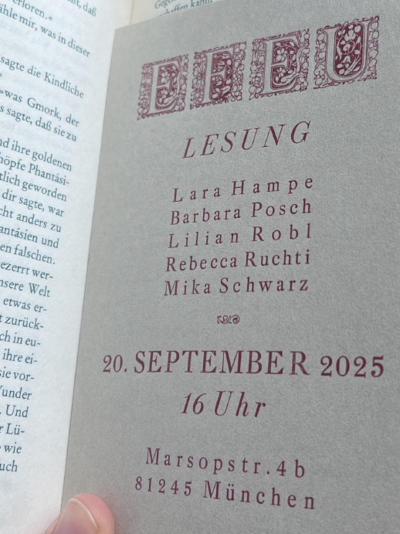Welcome at the Interface Culture program website.
Acting as creative artists and researchers, students learn how to advance the state of the art of current interface technologies and applications. Through interdisciplinary research and team work, they also develop new aspects of interface design including its cultural and social applications. The themes elaborated under the Master's programme in relation to interactive technologies include Interactive Environments, Interactive Art, Ubiquitous Computing, game design, VR and MR environments, Sound Art, Media Art, Web-Art, Software Art, HCI research and interaction design.

The Interface Culture program at the Linz University of Arts Department of Media was founded in 2004 by Christa Sommerer and Laurent Mignonneau. The program teaches students of human-machine interaction to develop innovative interfaces that harness new interface technologies at the confluence of art, research, application and design, and to investigate the cultural and social possibilities of implementing them.
The term "interface" is omnipresent nowadays. Basically, it describes an intersection or linkage between different computer systems that makes use of hardware components and software programs to enable the exchange and transmission of digital information via communications protocols.
However, an interface also describes the hook-up between human and machine, whereby the human qua user undertakes interaction as a means of operating and influencing the software and hardware components of a digital system. An interface thus enables human beings to communicate with digital technologies as well as to generate, receive and exchange data. Examples of interfaces in very widespread use are the mouse-keyboard interface and graphical user interfaces (i.e. desktop metaphors). In recent years, though, we have witnessed rapid developments in the direction of more intuitive and more seamless interface designs; the fields of research that have emerged include ubiquitous computing, intelligent environments, tangible user interfaces, auditory interfaces, VR-based and MR-based interaction, multi-modal interaction (camera-based interaction, voice-driven interaction, gesture-based interaction), robotic interfaces, natural interfaces and artistic and metaphoric interfaces.
Artists in the field of interactive art have been conducting research on human-machine interaction for a number of years now. By means of artistic, intuitive, conceptual, social and critical forms of interaction design, they have shown how digital processes can become essential elements of the artistic process.
Ars Electronica and in particular the Prix Ars Electronica's Interactive Art category launched in 1991 has had a powerful impact on this dialog and played an active role in promoting ongoing development in this field of research.
The Interface Cultures program is based upon this know-how. It is an artistic-scientific course of study to give budding media artists and media theoreticians solid training in creative and innovative interface design. Artistic design in these areas includes interactive art, netart, software art, robotic art, soundart, noiseart, games & storytelling and mobile art, as well as new hybrid fields like genetic art, bioart, spaceart and nanoart.
It is precisely this combination of technical know-how, interdisciplinary research and a creative artistic-scientific approach to a task that makes it possible to develop new, creative interfaces that engender progressive and innovative artistic-creative applications for media art, media design, media research and communication.
Efeu | Lesung
20. September 2025, 16.00 Uhr Marsopstr. 4b, 81245 München, DE
Beteiligung von Barbara Posch
„Der Speicher war groß und dunkel. […] Kein Laut war zu hören, außer dem leisen Trommeln des Regens auf das Kupferblech des riesigen Daches. Altersschwarze mächtige Balken ragten in gleichmäßigen Abständen aus dem Dielenboden, […] und verloren sich irgendwo in der Dunkelheit. Da und dort hingen Spinnweben, groß wie Hängematten, und bewegten sich leise und geisterhaft im Luftzug hin und her. Aus der Höhe, wo eine Dachluke war, drang milchiger Lichtschein herab.“
Die Beobachtung in diesem Zitat aus Michael Endes "Die unendliche Geschichte" beschreibt das Dachbodenzimmer in der Marsopstraße, das der Autor schon als Kind bei Besuchen entdeckte. In seinen Büchern, besonders in "Die unendliche Geschichte", stellt er die Bedeutung von Fantasie und Erinnerung in den Mittelpunkt.
Auf dem Grundstück befindet sich ein denkmalgeschützter Gebäudekomplex, bestehend aus einem Haupthaus sowie einem kleinen Zuhaus. Die beiden Häuser sind Teil der August-Exter-Villenkolonie I aus dem späten 19. Jahrhundert und entstanden im Zuge der damaligen Urbanisierung Münchens. Dadurch zeigen sich auf dem Grundstück auch zwei Lebenswelten: das Haupthaus und das kleinere Hinterhaus für damalige Angestellte.
"Aus dem unbewohnten Nachbargrundstück wächst Efeu entlang der Außenmauer des kleinen Häuschens und dringt in die Wände ein."
Einer der ersten Bewohner des Hauses war der Bildhauer Josef Floßmann. Nach ihm nutzten verschiedene KünstlerInnen das Haus als Wohn- und Arbeitsraum, was die ursprüngliche Durchmischung der Wohngegend sichtbar macht.
Die fünf eingeladenen Künstlerinnen Lara Hampe, Barbara Posch, Lilian Robl, Rebecca Ruchti und Mika Schwarz verbindet eine künstlerische Praxis, die sowohl das Räumliche, die Arbeit mit Material als auch das Schreiben beinhaltet.
Organisation: Laura Klodt-Bußmann
Gefördert durch Bayerisches Staatsministerium für Wissenschaft und Kunst Kulturreferat der Landeshauptstadt München
https://www.instagram.com/p/DOYA6lFgsNb/?hl=fr-ca
